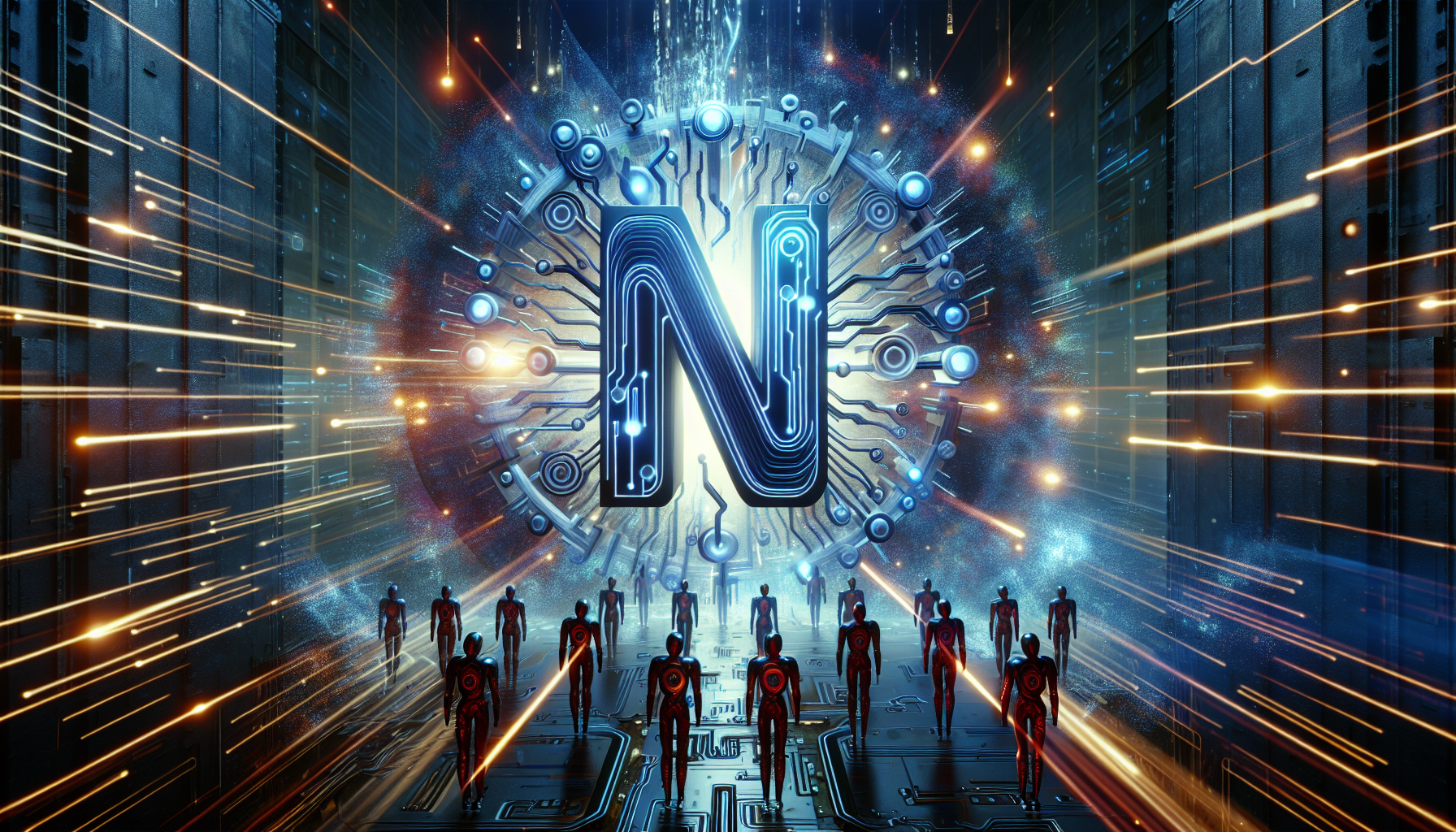
tl;dr
Nvidia faces a existential threat as tech giants like Amazon, Google, and Meta develop custom AI chips, reshaping the $50 billion semiconductor market and challenging the chipmaker's dominance.
**Nvidia Faces Unprecedented Challenge as Tech Giants Forge Custom AI Chips**
Nvidia, the titan of AI hardware, is encountering its most significant threat yet as major tech companies pivot to develop their own AI chips, challenging the company’s dominance in a market that once fueled its trillion-dollar empire. Industry insiders and analysts warn that this shift could erode Nvidia’s margins and reshape the AI chip landscape, as giants like Amazon, Google, Meta, Microsoft, and OpenAI invest heavily in in-house solutions to reduce reliance on the chipmaker’s expensive GPUs.
### The Rise of Custom Silicon
Tech giants are increasingly turning to custom-designed chips to optimize performance, cut costs, and gain control over their AI infrastructure. OpenAI, for instance, has partnered with Broadcom to design its own chips, while Meta acquired Rivos, a chip startup, as part of its broader push to expand internal chipmaking. Amazon’s Project Rainier, which already deploys hundreds of thousands of its Trainium2 chips, is another example of this trend, with analysts noting a surge in demand for the company’s custom hardware.
Google, a pioneer in AI chip development, has been at the forefront with its Tensor Processing Units (TPUs), which it began creating over a decade ago. In 2023, Google took a direct competitive step by selling its TPUs to a cloud provider, challenging Nvidia’s market position. Similarly, Microsoft’s Maia AI chip, launched in 2023, marks its entry into the space, though it lags behind peers like Google and Amazon.
### Market Share Shifts and Analyst Projections
JPMorgan analysts predict that by 2028, chips developed by Google, Amazon, Meta, and OpenAI could capture 45% of the AI chip market, up from 37% in 2024 and 40% in 2025. Meanwhile, Nvidia and AMD are expected to hold the remaining share. Jay Goldberg of Seaport Research highlights the strategic move by hyperscalers to avoid Nvidia’s “monopoly,” noting that the company now faces competition from its own customers.
The shift is driven by the cost-effectiveness and tailored performance of custom chips, which are designed to integrate seamlessly with each company’s software ecosystems. Unlike Nvidia’s GPUs, which are sold broadly, these chips are used internally and offered to cloud clients at lower prices, further reducing dependence on third-party hardware.
### Nvidia’s Response and Market Dynamics
Despite the challenges, Nvidia remains a dominant force, with CEO Jensen Huang asserting that the company is the only one capable of building “all of the chips inside an AI infrastructure,” including Blackwell GPUs, Arm-based CPUs, and networking units. Huang emphasizes Nvidia’s holistic approach to AI systems, which he argues provides a unique advantage.
However, analysts like David Nicholson of Futurum Group caution that the rise of custom silicon poses a “death by a thousand cuts” to Nvidia’s margins. While Nvidia’s software ecosystem and GPUs are still preferred by many developers, the proliferation of alternative chips is expected to pressure profitability over time.
Some Wall Street analysts, however, remain optimistic. Vivek Arya of Bank of America and Gil Luria of DA Davidson argue that the growth of the AI market is so substantial that it will absorb multiple players. Luria noted that Google’s TPU and DeepMind units could be worth $900 billion, calling them “one of Alphabet’s most valuable businesses.” He also pointed out that the gap between Nvidia and its rivals is narrowing, with AI models becoming more complex and demanding greater compute power.
### The Road Ahead
While the race for custom AI chips intensifies, not all companies may succeed. Goldberg of Seaport Research warned that designing silicon is a complex, resource-intensive endeavor, and “not all of them will succeed.” Still, the trend underscores a broader industry shift toward vertical integration, as tech giants seek to control their AI futures.
For Nvidia, the challenge is clear: adapt to a fragmented market where customers are both competitors and collaborators. As the AI landscape evolves, the company’s ability to innovate and maintain its leadership will be tested like never before. But with the demand for compute power surging, the “pie” for all players—Nvidia included—may still grow, even as the competition heats up.